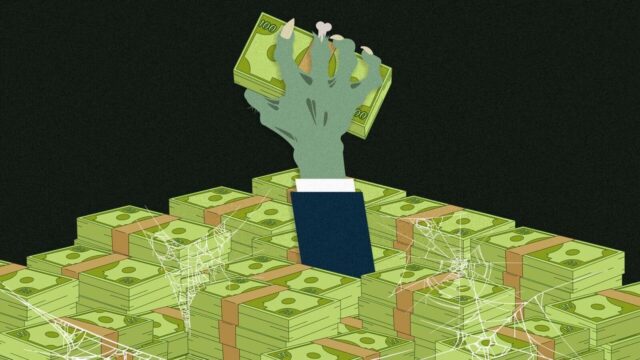Now the honeymoon is over. The payouts have dried up, creating an expensive problem for investment managers overseeing the savings of workers retired from big corporations and state and city governments.
To keep benefit checks coming on time, those managers are unloading investments on the cheap or turning to borrowing—costly measures that eat into returns. California’s worker pension, the nation’s largest, will be paying more money into its private-equity portfolio than it receives from those investments for eight years in a row. The engine maker Cummins took a 4.4% loss in its U.K. pension last year, in large part because it sold private assets at a discount.
It is the latest cash crunch to befall retirement funds that have piled into hard-to-sell investments in search of high returns, and spotlights the risks as Wall Street is trying to sell those investments to wealthy households.
“You’ve got a lot more money out and going out than is coming back, and I think that’s causing a lot of angst,” said Allen Waldrop, Alaska Permanent Fund Corp. private-equity director.
U.S. companies and state and local governments manage around $5 trillion in pension money. Large public pension funds have an average 14% of their assets in private equity, while large corporate pensions have almost 13% in private equity and other illiquid assets such as private loans and infrastructure, according to data from Boston College and JPMorgan Chase. Much of the money was committed when low bond yields were dragging down retirement portfolios.
But as private equity has grown, its lead over traditional stocks has narrowed. And during the decade before the investments pay out, it can be hard to trust interim estimates provided by fee-seeking managers.
Pensions, sovereign-wealth funds, university endowments and other institutions often promise their money to private-equity managers for a decade or so. Over that time, the managers draw down the cash and use it to buy companies, then overhaul and sell them. Those sales and the resulting cash distributions to investors have slowed markedly as high interest rates have made buying and owning companies more complicated and expensive.
Unable to sell without denting returns, private-equity managers are keeping workers’ retirement savings locked up for longer—sometimes past the promised maturity date. Nearly half of private-equity investors surveyed by the investment firm Coller Capital earlier this year said they had money tied up in so-called zombie funds—private-equity funds that didn’t pay out on the expected timetable, leaving investors in limbo.
So pension funds are selling private-equity fund stakes secondhand—often taking a financial hit in the process. Secondary-market buyers last year paid an average of 85% of the value the assets were assigned three to six months before the sale, according to Jefferies Financial Group. Secondhand sales by private-equity investors increased 7% to $60 billion last year.
Columbus, Ind.-based Cummins sold private assets because its U.K. pension suddenly needed cash after derivatives bets backfired and many U.K. pensions had to post large amounts of collateral. A Cummins spokeswoman said the plan is confident in its strategy.
The Oakland, Calif.-based healthcare provider and nonprofit insurer Kaiser Permanente has sold $6.5 billion in private assets in the past two years and is preparing to sell another $3.5 billion after an aggressive push into private markets a few years ago. Anton Orlich, who oversaw much of that push, is now supervising an expansion of the $502 billion California Public Employees’ Retirement System’s private-equity portfolio to 17% of assets.
Orlich told Calpers’s board Monday that the cash demands of the private-equity portfolio have dwarfed payouts for four years and would continue to do so for about another four years. Calpers is investing extra money up front as a part of a strategy that will reduce sudden requests for cash later, Orlich said.
Some pension funds are borrowing to access cash. Both Calpers and the $333 billion pension serving California teachers have approved plans to take out loans equivalent to 5% and 10% of fund holdings, respectively.
The Alaska Permanent Fund Corp. has received cash from a different kind of borrowing: private-equity managers making payouts that come not from investment gains but from loans they have taken out to appease cash-starved pensions and other investors. That is frustrating for the investment chief, Marcus Frampton. He estimated that his fund, which invests mineral revenue and other state money, could borrow on its own at lower cost. So far, this practice doesn’t appear to be widespread.
The $80 billion Alaska fund has been getting more cash from its private-equity program than it has put in. But it still missed out on around half a percent worth of stock gains—or about $40 million—over the past year after private equity tied up more cash than expected, causing the fund to run a smaller than planned stock portfolio, Frampton told the fund’s board last month.
Board members decided to reduce real-estate and cash holdings instead. They also voted to scrap a goal set a year ago to reduce the share of assets in private equity.
—Laura Kreutzer and Rod James contributed to this article.
Write to Heather Gillers at heather.gillers@wsj.com




